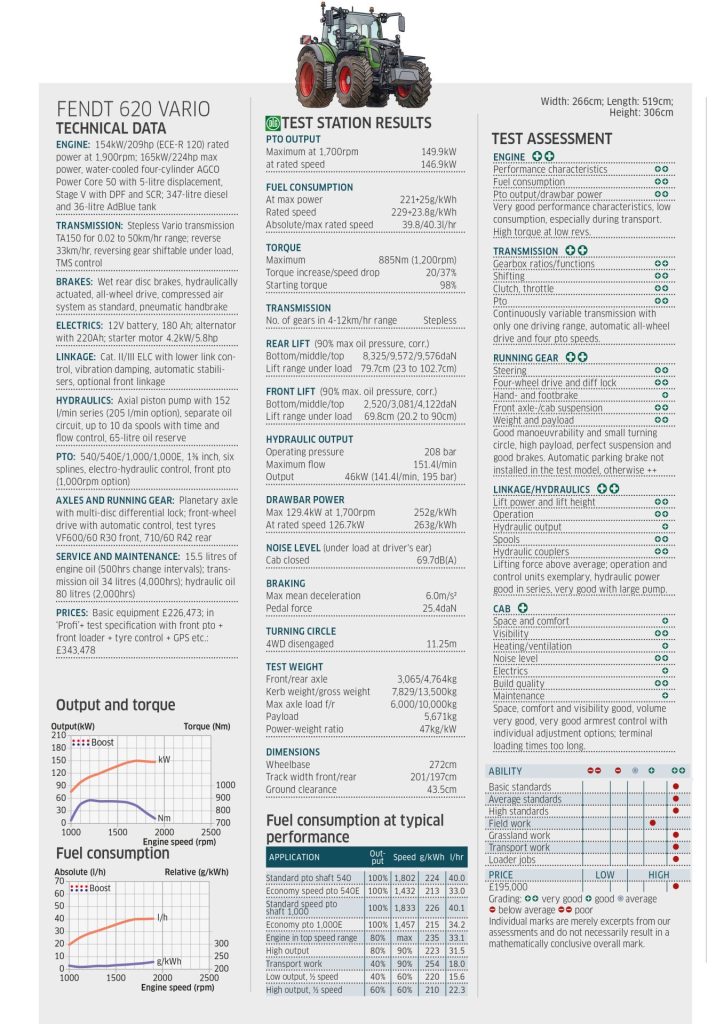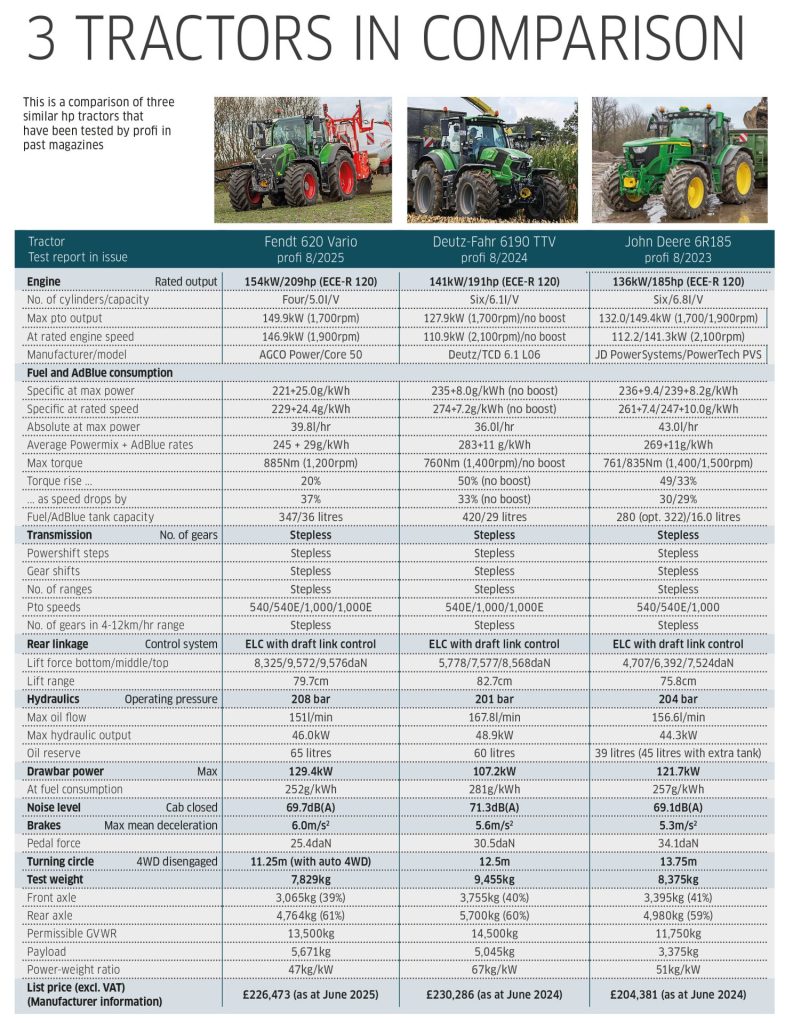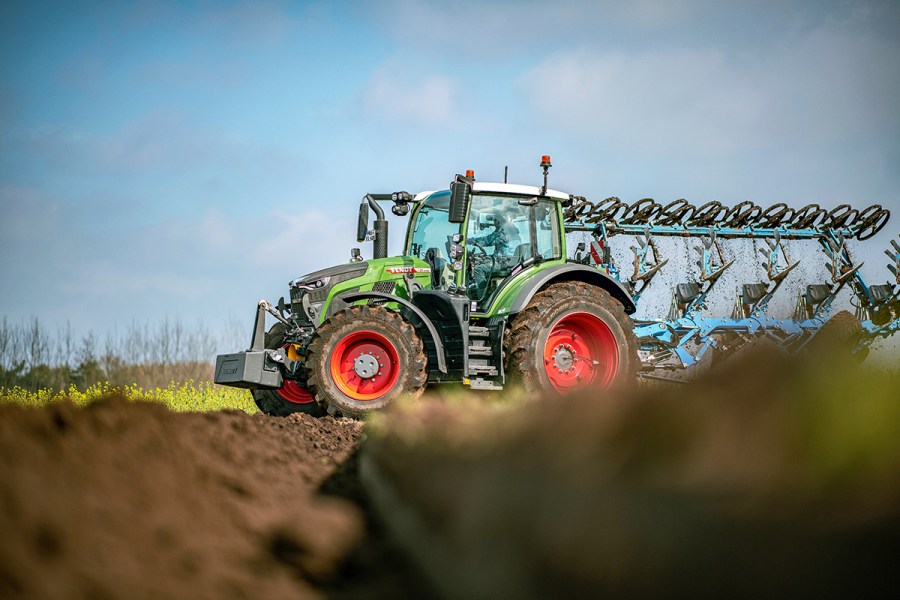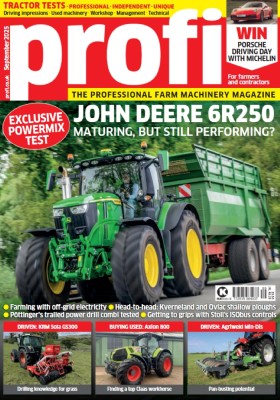The Fendt 600 has it all — not only its monstrous performance for a four-cylinder, but also its outstanding operator comfort and operator flexibility. But the calculator is going to take some bashing to make the hefty price stack up.
KEEPING IT BRIEF
- The 620 Vario produces over 200hp from four cylinders.
- 311g/kWh during the transport test (at 50km/hr) is great; however, AdBlue consumption is above average.
- List price in test spec guise is £343,478.
- In our initial meet and greet driving impression in profi 4/2024, we had the chance to poke around the new-from- the-ground-up 600 Vario range.
There was one stat that stuck in our mind, the 600’s wheelbase, which is 2.72m, the exact same as the now much revered 818 and 820 Vario models. But rather than having a manly six-cylinder engine under the new-style green hood, Fendt goes with a four-pot, 5.0-litre AGCO Power Core 50 motor across the four models in the 600 Vario series.
In the top-of-the-range model and the tractor size we look at here, the 620, this Finnish-built engine churns out a rated output of 154kW/209hp, to which you add the 11kW/15hp ‘Dynamic Performance’ that’s denoted by the red numbering on the hood. These extra ponies are mustered into action when there is additional load from the ancillaries such as the radiator fan or air-con compressor, even when the tractor is still stationary, regardless of the load on the pto. This makes it different to how other tractors boost.
Low rev concept
With 2,000 bar injection pressure and four valves, the 600 also features the low rev concept first introduced on the 1000 Vario nearly 10 years ago. Hydraulic tappets ensure smooth running, low wear and require less space, which translates into a lower bonnet and better visibility. Pulling a five-furrow Lemken Juwel 8 plough at a depth of 25cm complete with integrated packer, our test tractor worked its way pass after pass at 8km/hr and just 1,350rpm — impressive!
This was backed up at the dyno test, when we measured an impressive 146.9kW/201hp when the engine is revving at rated speed and nudging its way to 149.9kW/205hp at maximum output. That Core 50 motor can also really dig in. Generating a maximum torque of 885Nm at 1,200rpm on the pto dyno, the 620 even surpasses the old 820 Vario TMS (871Nm). The low starting torque of 98% is nothing to worry about. Only when the drivetrain is suddenly loaded, such as when lowering a cultivator, does the engine-transmission software need to react faster. Otherwise, such situations are handled by the coordination between the engine and transmission — especially as the 600 with the TA150 transmission doesn’t have to shift between two ranges like with the Varios of old.
In terms of fuel economy, the 620 steps into the marks of its big brother, the 728 (profi 3/2024): 229g/kWh (+23.8g/kWh AdBlue) at nominal speed and 221g/kWh (+25g/kWh) mean efficiency.
This is further cemented in the Powermix test cycles: in heavy draft work, the savings are in the single-digit percentage range. Yet, in mixed work and at half load, the versatile Fendt is on average 10-15% more economical than all of the tractors tested up to now. So, a Powermix rate of 245g/kWh scores top marks. As for exhaust gas cleaning, Fendt now cuts out the need for exhaust gas recirculation — which is good for the engine. But then this tractor does seem partial to AdBlue — 9% of DEF, which is 29g/kWh or up to 3.0l/hr.
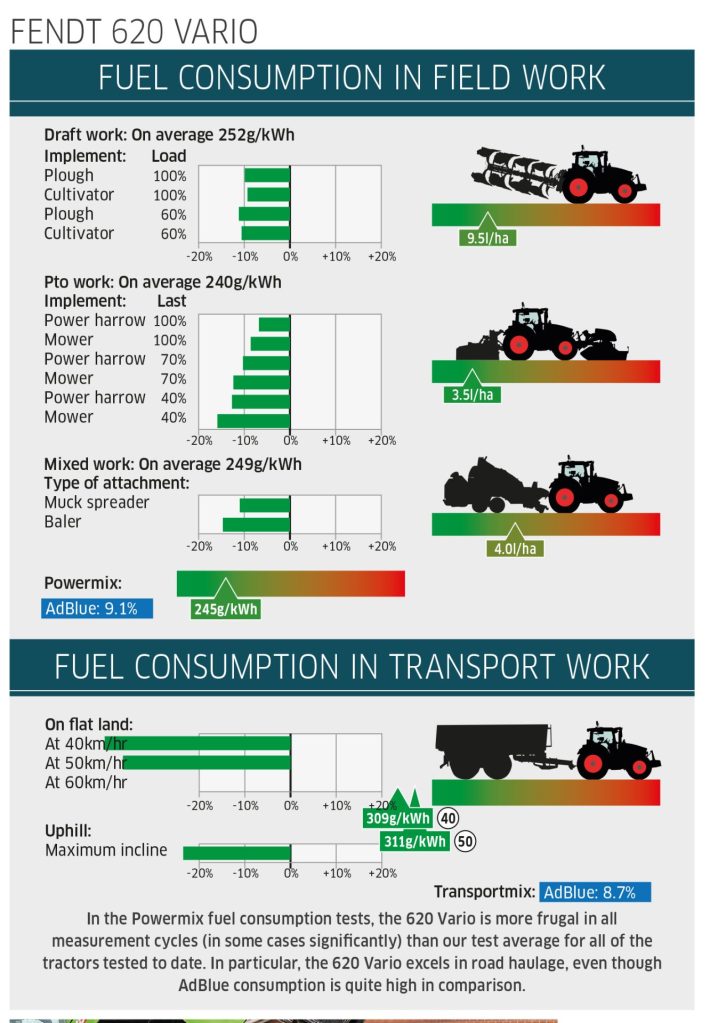
Optional reversible fan
Unlike the Gen 7 700, Fendt relies on a suction type, mechanically driven fan, with the option of upgrading this to a Hägele reversible fan. Controlled from the terminal, the fan automatically blows out the radiator pack at adjustable intervals.
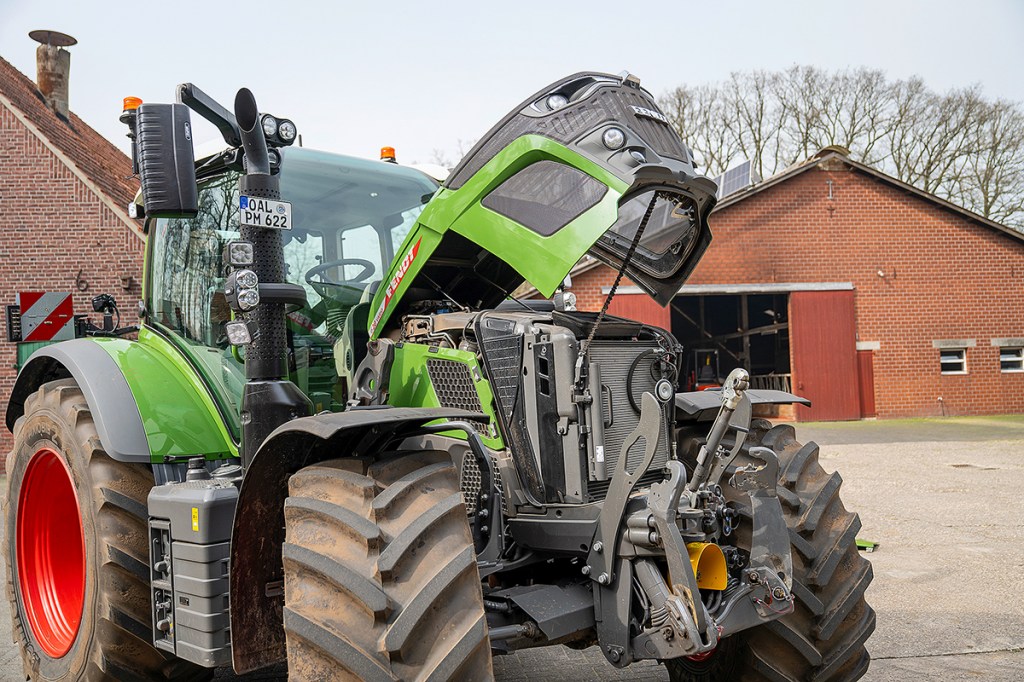
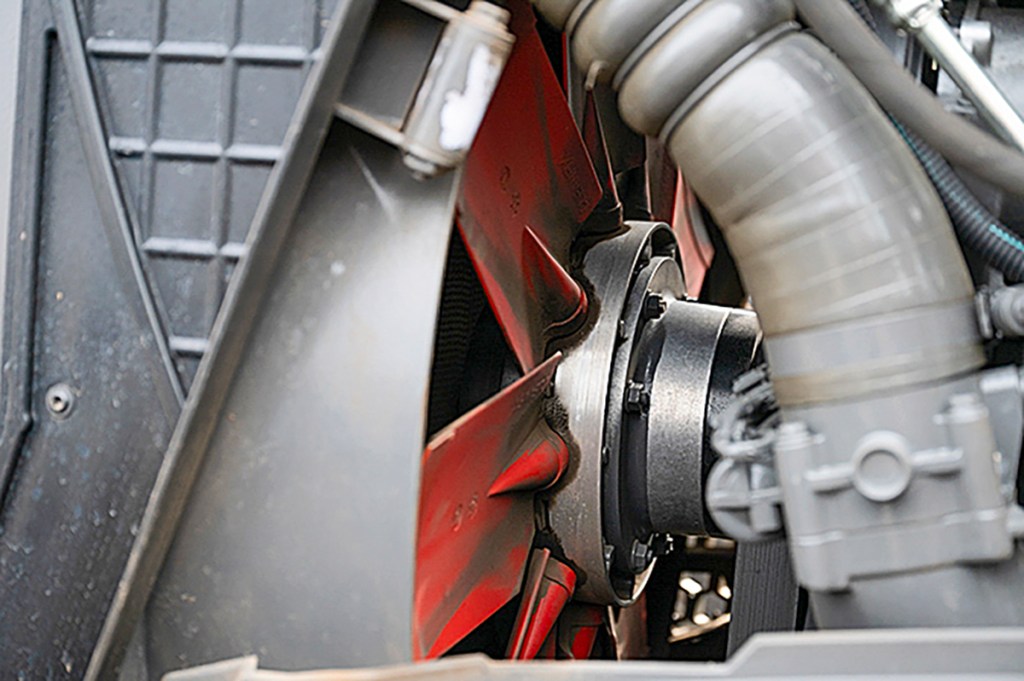
Before we go on to discuss the excellent ride comfort on the road, it is worth shining a light on the 620’s low fuel consumption during the road tests: 309g/kWh at 40km/hr or even just 311g/kWh at 50km/hr are record figures. You can glide down the road at 50km/hr with the engine gently purring at 1,350 revs. The only notable detail that’s missing is the practical possibility to freely switch between joystick and pedal mode. At least it is possible to control the cruise control speed by pressing a white button. The same applies to cutting the pedal speed range in half, which is ideal when changing from road to field mode.
Another talking point is the automatically controlled four-wheel-drive system, which may soon be found on the smaller Vario models, too. It’s brilliant, especially for front loader work. No more rubber marks on the concrete, not even with a full bucket. In addition, the hydraulic drive pulls the 620 into the bend and ensures a turning circle of just 11.25 metres.
Nevertheless, the driver can engage four-wheel drive in the sub-menu and manually engage the longitudinal diff lock. Then, the rear and front axles are both mechanically connected, similar to when braking. We have never had to operate the switch, but Fendt says customers who do winter maintenance jobs such as snow ploughing requested this function.
The automatic parking brake should definitely be standard fit on a tractor with such a high price tag: on the test tractor we had to operate the awkwardly positioned lever to the left of the dash whenever we were setting off. Come on Fendt, just make the auto-park standard — many of your lower priced competitors already do!
The 620 comes with four pto speeds as standard (540, 540E, 1,000 and 1,000E). So, it’s just the 1,000E speed for the front pto that’s still missing from the premium player.
Up to 205 l/min flow
Valtra led the way and now the Fendt 600 is following suit — a 205l/min swash plate pump is available as factory-fit. A 152l/min pump is installed as standard. As for the number of couplers, you can order up to 10 double-acting spools: five at the rear, three between the axles and two up front.
And for those wanting high flow rates, you can order ¾-inch connectors at the rear, which allow a flow rate of up to 170l/min. Any municipal customers will appreciate the multi-coupler between the axles — for example, for operating a reach mower.
Incidentally, we will be reporting on Fendt’s Cargo 5 90 front loader model, complete with integrated weighing system, return-to-position feature and lights in a future profi test. A new feature is the ability to deactivate the float position on the 3L joystick for loader work.

Another handy addition is the hydro-motor function, which enables operators to switch a spool directly from constant flow (+) to float position without generating any back pressure during the changeover. There is also the electronic LS system, where the release pressure is set on the terminal. Thanks to the ISObus signal, the familiar signal cable can even be dispensed with — which is ideal for a potato harvester, for example.
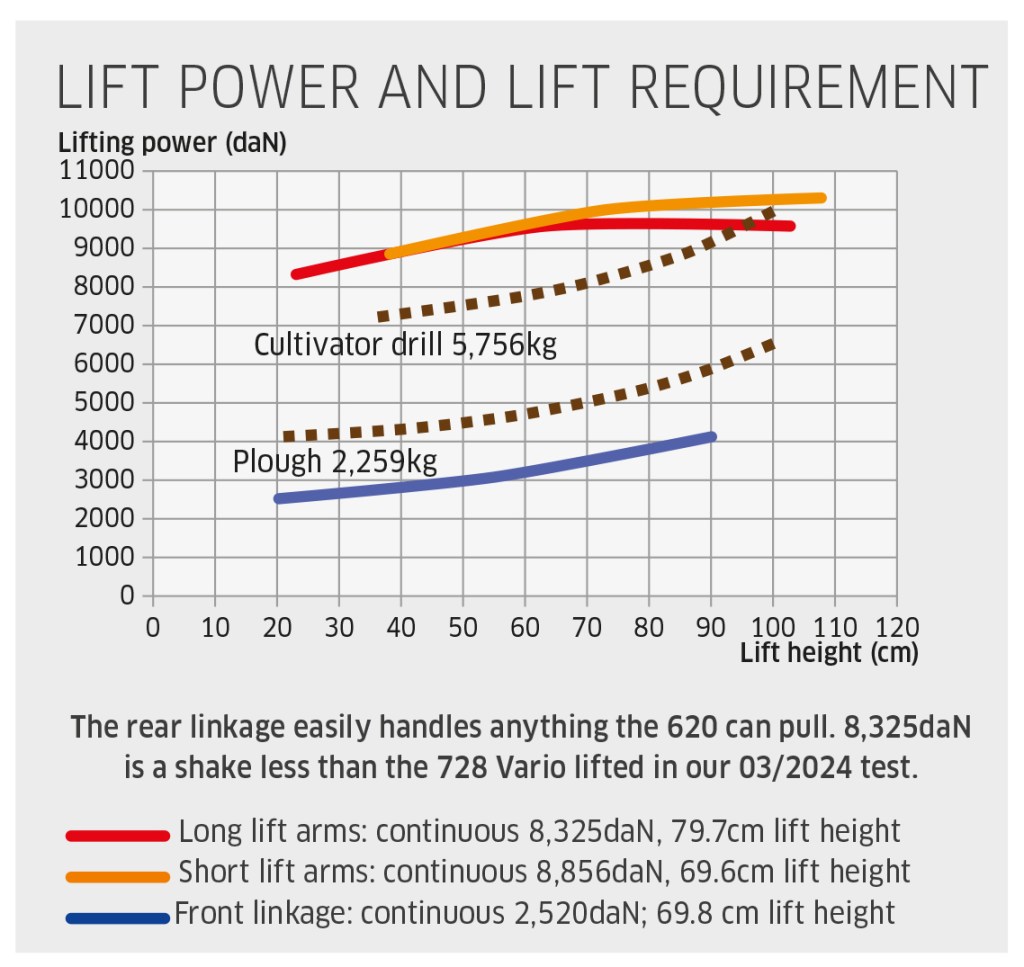
Plenty of lifting power
With a continuous lift of 8,325daN, our test 620 lifts just a shake less than the 728 Vario. If there is a limiting factor, then it’s the Cat. III hydraulic top link. There is no weight assist mechanism so that the hefty top link can be handled effortlessly and safely when attaching and removing kit.
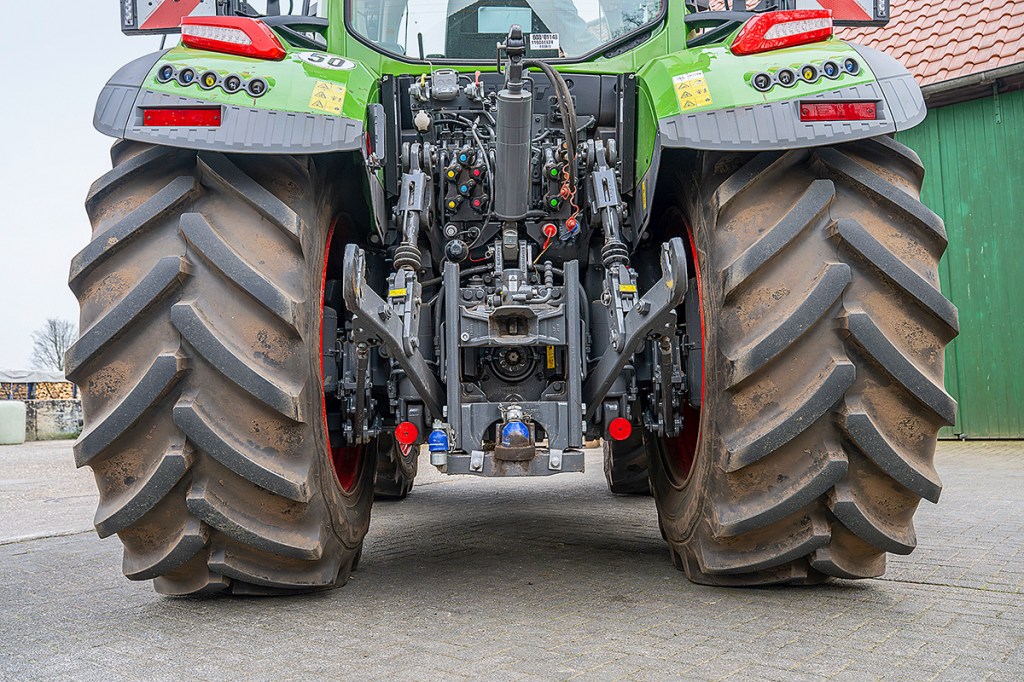
Both linkages are not only double-acting as an option but also have a load-relieving function. For instance, this can eliminate the need for suspension springs on a front mower, while at the rear it can be used to transfer weight across to the rear axle, for example. This option also makes it possible to use the linkage for jacking up the tractor when changing tyres.
On the subject of tyres and pressures, you can plump for VF tyres from the price list along with the optional VarioGrip pressure control system (€11,072). The water-cooled 800-litre compressor is flange-mounted to the engine. Also, duals on stub axles can be controlled through the integrated system.
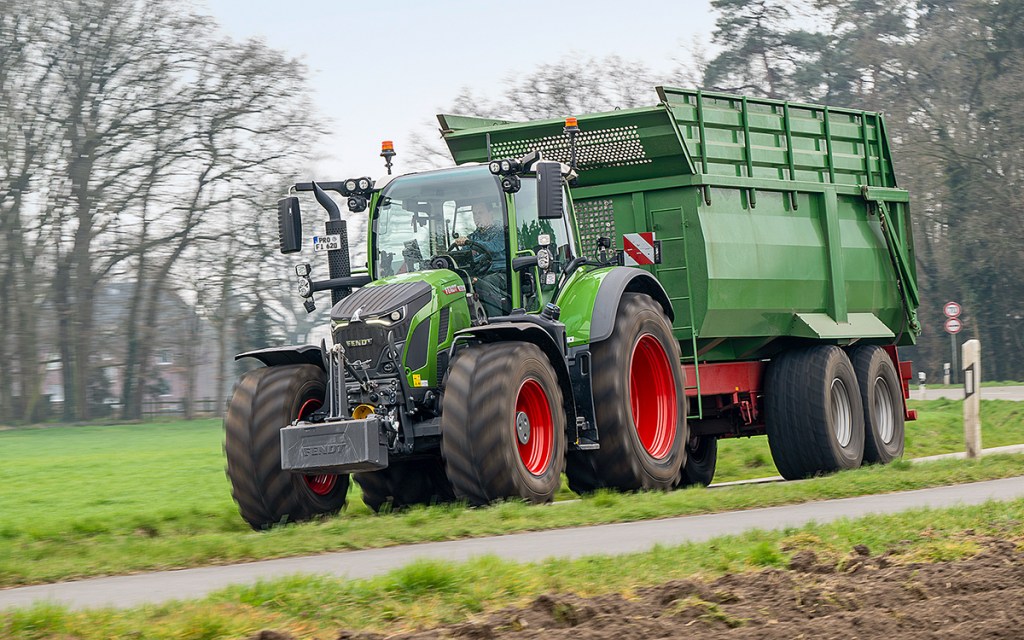
Too quiet
At just under 70dB(A), it is so quiet in the cab that even the noise from the ventilation and air conditioning system is noticeable. According to Fendt, the heated windscreen is made from laminated safety glass, which reduces noise levels by 3dB(A) compared with a regular windscreen.
Outside, the four-cylinder isn’t the quietest and when the reversible fan is working, it sounds like the reverse thrust of a jet.
A Cat. 4 filter protection function is offered for the cab — a great solution for anyone who wants to use the 620 for spraying. The cab filter is still difficult to access behind the cab. This also applies to the air filter, which can’t be removed when the Fendt front loader is attached. However, Fendt says the current filter state is indicated on the terminal by measuring the negative pressure, which should reduce the need to take the loader off to check the filter.
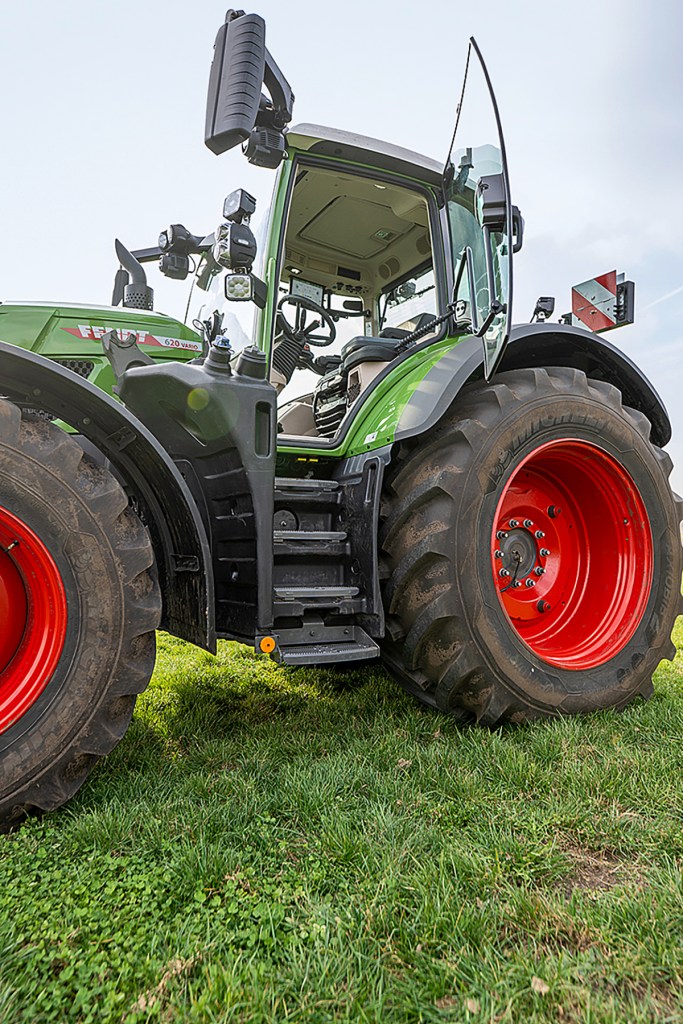
The new cab is a good size, and the steps are nice and wide. Nevertheless, there are ‘slight deductions in the finer points’: the new seat from Isringhausen swivels a mere 20° to the right in the factory setting. You can refit stops under the seat to extend this range to 36° (as on the 900 Vario), but then the terminal can smack against the side window.
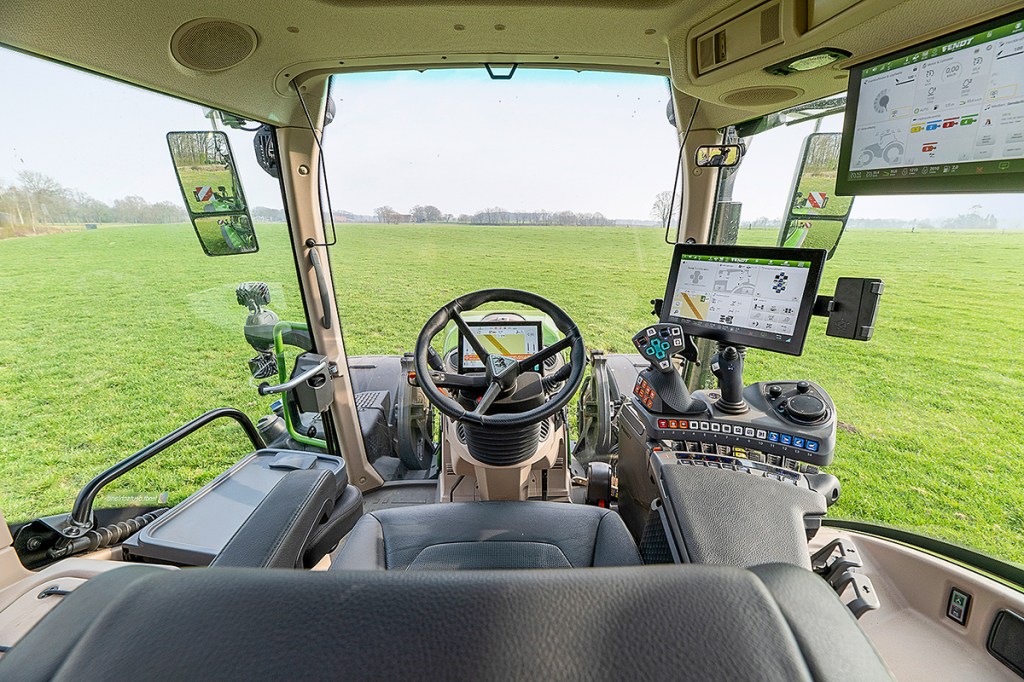
Saved seat position
The seating position of the electrically adjustable Isringhausen seat is saved in the user profile. So, when a driver selects his or her profile, the comfy seat moves to the previously set position — just like on a car. Our team of users did debate its usefulness, especially because it means the adjustable features such as the backrest cushions, heating and ventilation need to be altered via the terminal.
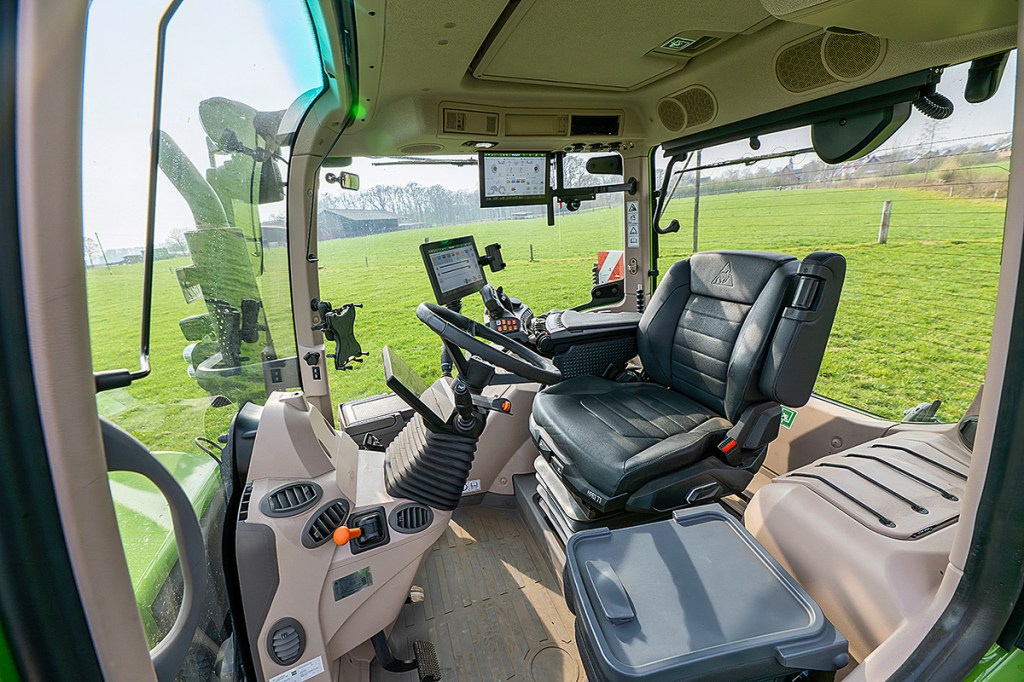
Compared to Vario joysticks of old, the new FendtOne system is a bit more clunky to use and not so easy to kick to the side. This is why Fendt has added the white button with selectable cruise control.
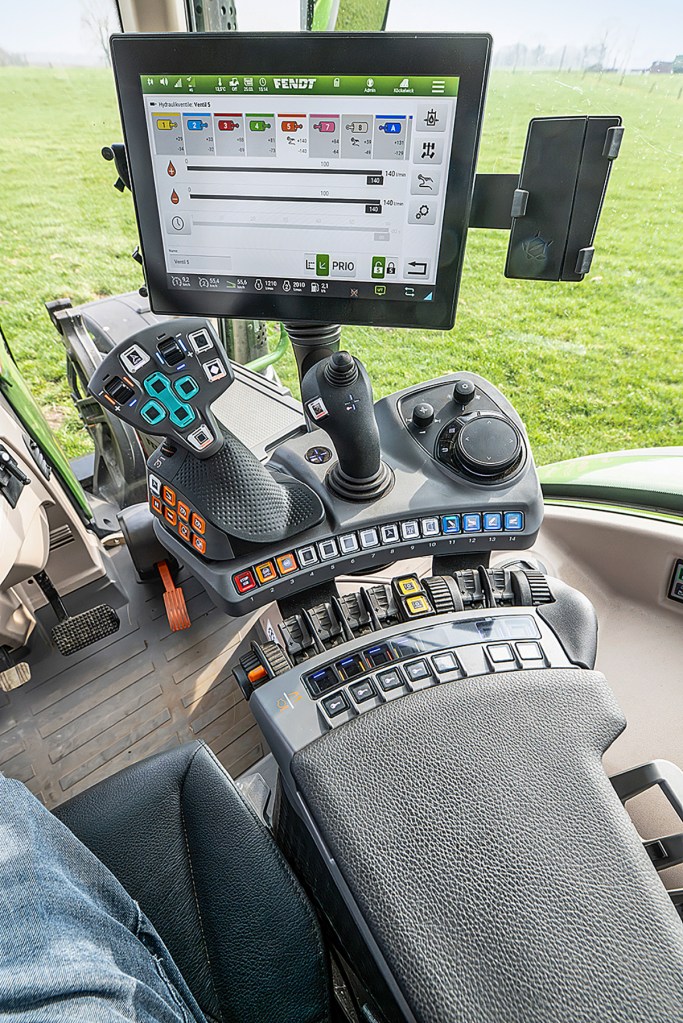
The 3L joystick remains unrivalled — not only for loader work but also in terms of AUX-N assignment, which is easy to fathom and excellently visualised. We would like to see a start-stop system. Without such an auto system, it takes about 30 seconds after activating the last settings before the tractor can start again.
The new FendtOne off-board system merits its own article. For now, we’d just make the point that the system still isn’t as refined as others. Although you can transfer field passes from the office computer, this is neither displayed on the terminal to explain the steps to the driver, nor is there an app to help, either.
Floating suspension
This tractor seems to float on the road. This is not only thanks to the perfectly balanced front axle suspension but also the three-point cab suspension which uses air bags. The 620 is ahead of the competition when it comes to tractor payload. An impressive 5.6 tonnes can be added with a permissible gross vehicle weight of 13.5 tonnes.
How much?
Despite all the enthusiasm for and great design achievements on this tractor, the prices are still staggering. The compact and comfy Fendt 620 Vario in base specification already costs £226,473. If you then spec up a 620 to the same as what we tested, then the list price goes up to an eye-watering £343,478.
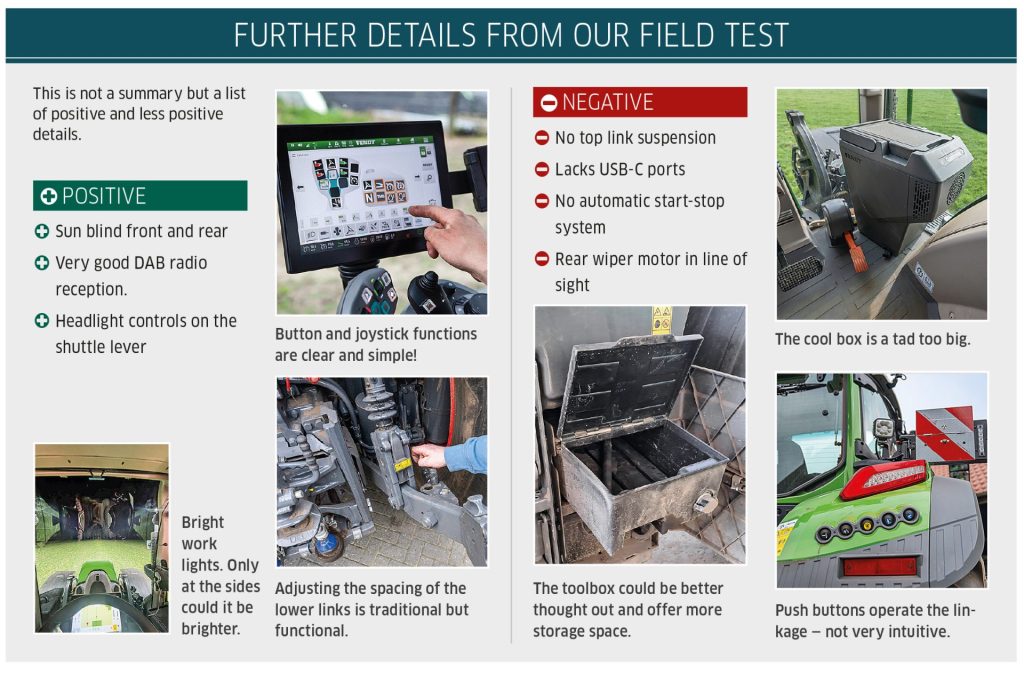
Summary
The 600 Vario will undoubtedly find favour among operators. Its strengths of visibility, manoeuvrability, comfort and fuel use, make it a perfect all-rounder in this power band.
Provided dealers can sharpen their pencils, especially now that the Gen 6 Vario 700s are being discontinued, we could well see more 600s around the countryside.
Tobias Bensing
For more up-to-date farming news click here and subscribe now to profi and save.
